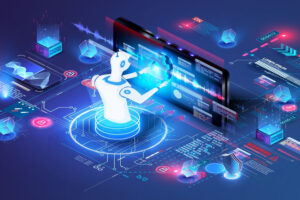In today’s rapidly evolving digital landscape, the ability to communicate effectively across language barriers has become more crucial than ever. AI-generated language translations in video are paving the way for seamless global communication, making content more accessible and inclusive. As digital creators seek to reach wider audiences, integrating this technology into their workflow is becoming a game-changer.
The advent of AI-generated language translations in video is not just a trend; it’s a transformative shift in how we create and consume content. With the power to automatically translate and localize video content, creators can now engage with audiences from different linguistic backgrounds more effectively. This opens up a world of opportunities for businesses, educators, and entertainers alike.

Understanding AI-generated Translations
Artificial Intelligence (AI) has made significant strides in the realm of language translation. By leveraging machine learning algorithms and neural networks, AI can now accurately translate spoken and written words in real-time. This technology is particularly revolutionary in the video industry, where subtitles and voiceovers can be automatically generated to match the original content.
How Does It Work?
AI-powered language translation tools use a combination of speech recognition, natural language processing, and machine translation techniques. The process begins with speech recognition, where the AI listens to the audio track of the video and transcribes it into text. This text is then analyzed and translated into the desired language using machine translation algorithms. Finally, the translated text is either displayed as subtitles or converted into speech using text-to-speech technology.
Benefits for Digital Creators
For digital creators, AI-generated language translations in video offer numerous advantages. By breaking down language barriers, creators can expand their reach and connect with a global audience. This not only increases viewership but also enhances engagement and interaction with diverse communities.
Cost-Effective Localization
Traditional methods of video localization can be costly and time-consuming. However, AI-powered translation tools provide a more cost-effective alternative. By automating the translation process, creators can save both time and resources, allowing them to focus on producing high-quality content.
Improved Viewer Experience
With accurate translations and synchronized subtitles or voiceovers, viewers can enjoy a seamless experience regardless of their native language. This enhances comprehension and ensures that the message of the content is conveyed effectively.
Challenges and Considerations
While the advantages of AI-generated language translations in video are abundant, it’s important to acknowledge the challenges that come with this technology. One significant concern is the accuracy of translations. Although AI has greatly improved, it is not infallible, and errors can occur. It is essential for creators to review and edit translations to ensure they accurately reflect the original content.
Maintaining Cultural Sensitivity
Cultural nuances and context can sometimes be lost in translation. Creators must be mindful of the cultural implications of their content and ensure that translations are culturally appropriate. This requires a combination of AI-generated translations and human oversight to achieve the best results.
Future of AI in Video Translation
The future of AI-generated language translations in video is promising. As technology continues to advance, we can expect even greater accuracy and efficiency in translations. This will further enhance the accessibility and inclusivity of digital content, allowing creators to connect with audiences on a global scale.
Integration with Other AI Tools
With the integration of AI tools such as video marketing tools, creators can optimize their workflow and streamline the production process. These tools offer additional features such as video editing, voice cloning, and content optimization, enhancing the overall quality of the content.
Conclusion
In conclusion, AI-generated language translations in video are revolutionizing the way we communicate and consume content. By breaking down language barriers, this technology is fostering a more inclusive and connected world. As digital creators, embracing these advancements can unlock new opportunities and expand the reach of your content.

FAQs
1. How accurate are AI-generated translations?
AI-generated translations have significantly improved in accuracy, but they are not perfect. It’s essential for creators to review and edit translations to ensure they accurately reflect the original content.
2. Can AI translations handle multiple languages?
Yes, AI translation tools are capable of handling multiple languages. This allows creators to reach diverse audiences and expand their global reach.
3. Are AI-generated translations cost-effective?
Yes, AI-generated translations offer a cost-effective alternative to traditional localization methods. By automating the translation process, creators can save time and resources.
For more information on how AI is transforming the video industry, check out this external resource.







